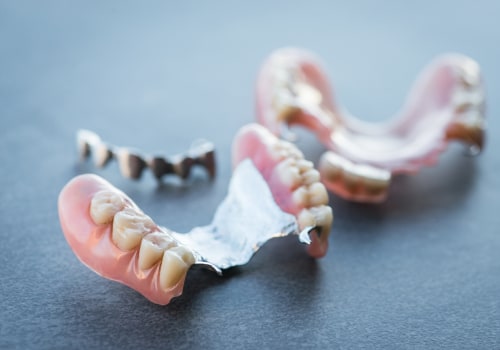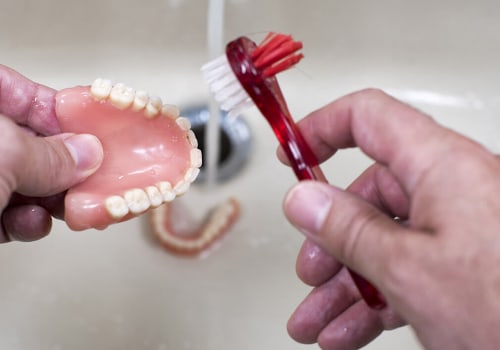Are you tired of dealing with the discomfort and inconvenience of traditional dentures? Look no further, as removable bridges may be the perfect solution for you. In this comprehensive article, we will delve into the various types of removable bridges available and how they can offer a more comfortable and convenient alternative to traditional dentures. Whether you are missing a few teeth or need a full set, removable bridges offer a customizable option that can improve your quality of life. Join us as we explore the world of removable bridges, from the different materials used to their benefits and drawbacks. We understand that deciding on the right dental solution can be overwhelming, so let us guide you through this journey and help you make an informed decision.
So, sit back, relax, and let's dive into the world of removable bridges. Removable bridges are a popular option for those looking to replace missing teeth. These restorations are designed to not only improve the appearance of your smile, but also to improve your oral health and daily life. Unlike traditional dentures, removable bridges can be easily removed for cleaning and maintenance, making them a convenient and hygienic choice. There are two main categories of removable bridges: partial and full. Partial bridges are used when there are still natural teeth present, while full bridges are used when all teeth are missing in one or both arches.
Your dentist will determine which type is best for you based on your specific needs. Within these categories, there are different options available. Traditional partial dentures have a metal framework and acrylic base, which provides a strong and durable fit. However, some patients may find these to be uncomfortable or bulky. In these cases, flexible partial dentures may be a better option.
They use a flexible material that blends in with your natural gum tissue, providing a more comfortable fit. If you're looking for a more secure fit, there are other types of removable bridges available as well. Implant-supported bridges utilize dental implants to anchor the bridge in place, providing a strong and stable foundation. Precision attachments use a locking mechanism to keep the bridge in place, providing added stability. Removable bridges also come in various materials such as porcelain, acrylic, and composite resin. Each material has its own benefits and drawbacks, so it's important to discuss with your dentist which option is best for you.
For example, porcelain bridges are known for their natural appearance but may be more prone to chipping or cracking. Acrylic bridges are more affordable but may not be as durable as porcelain. Composite resin bridges offer a middle ground between the two. In conclusion, removable bridges offer a viable alternative to traditional dentures for those looking to replace missing teeth. With various types and materials available, your dentist can help you find the best fit for your needs and lifestyle.
Say goodbye to discomfort and inconvenience with removable bridges!
Partial vs. Full Bridges
When considering removable bridges as an alternative to traditional dentures, it is important to understand the difference between partial and full bridges. While both types serve to replace missing teeth, they differ in their coverage and functionality.Partial Bridges:
A partial bridge, also known as a removable partial denture, is designed to replace one or more missing teeth in a specific area of the mouth. It consists of artificial teeth attached to a gum-colored base and is secured in place by clasps that attach to neighboring teeth. This type of bridge is ideal for individuals who still have some of their natural teeth remaining, as it can help prevent these teeth from shifting out of place.Partial bridges are also more cost-effective than full bridges, making them a popular choice among patients.
Full Bridges:
A full bridge, also known as a complete denture, replaces all the teeth in either the upper or lower jaw. It consists of a flesh-colored acrylic base that fits over the gums and is held in place by suction or dental adhesive. Full bridges are recommended for individuals who have lost all or most of their natural teeth. They provide a more natural look and feel compared to traditional dentures and can greatly improve oral function and speech.Materials Used
When it comes to removable bridges, one of the key considerations is the material used. The most common materials used for removable bridges are porcelain, acrylic, and composite resin.Each material has its own unique properties and benefits, making them suitable for different situations. Let's take a closer look at each one.
Porcelain:
Porcelain is a popular choice for removable bridges because of its natural appearance and durability. It is made from a strong ceramic material that is able to withstand daily wear and tear.This makes it a great option for those looking for a long-lasting solution.
Acrylic:
Acrylic is another commonly used material for removable bridges. It is known for its affordability and versatility, as it can be easily customized to fit any shape or size. However, it may not be as durable as porcelain and may need to be replaced more frequently.Composite Resin: Composite resin is a newer material that is gaining popularity for removable bridges. It is a mixture of plastic and glass materials, making it strong and resistant to staining. It also allows for a more natural look and can be easily repaired if damaged. When considering which material to choose for your removable bridge, it's important to consult with your dentist to determine the best option for your specific needs and budget.
With the right material, you can enjoy the benefits of a comfortable and functional removable bridge for years to come.
Types of Removable Bridges
When it comes to replacing missing teeth, removable bridges are becoming a popular choice for many individuals. These bridges offer a comfortable and convenient solution for those who are tired of dealing with the discomfort and inconvenience of traditional dentures. But what exactly are the different types of removable bridges? Let's explore your options.Traditional Removable Bridges
Also known as conventional or partial dentures, traditional removable bridges consist of a gum-colored plastic base and artificial teeth. These bridges are held in place by metal clasps that attach to the surrounding natural teeth.While they are a cost-effective option, they may not be the most aesthetically pleasing and can cause discomfort for some individuals.
Implant-Supported Removable Bridges
Implant-supported removable bridges are similar to traditional bridges, but they are attached to dental implants instead of natural teeth. This provides a more secure and stable fit, without the need for metal clasps. However, this option may be more expensive and requires a surgical procedure to place the implants.Cantilever Removable Bridges
Cantilever bridges are used when there is only one natural tooth next to the gap where the bridge will be placed. The artificial tooth is attached to the natural tooth using a metal or resin bond.While this option may be suitable for some individuals, it can put excessive strain on the supporting tooth and may not be as stable as other options.
Interim Removable Bridges
Interim bridges are designed as a temporary solution while waiting for a permanent bridge to be made. These bridges are typically made of acrylic and do not have the same level of customization as other types of bridges. They may also be more prone to damage or breakage. It is important to discuss your options with your dentist to determine which type of removable bridge is best suited for your specific needs and budget. With the right removable bridge, you can improve your oral health and daily life, without the discomfort and inconvenience of traditional dentures.In conclusion
, removable bridges offer a convenient and effective solution for those seeking an alternative to traditional dentures.With various types and materials available, there is an option to fit every individual's unique needs. Consult with your dentist to determine the best removable bridge for you and say goodbye to the discomfort of traditional dentures.






